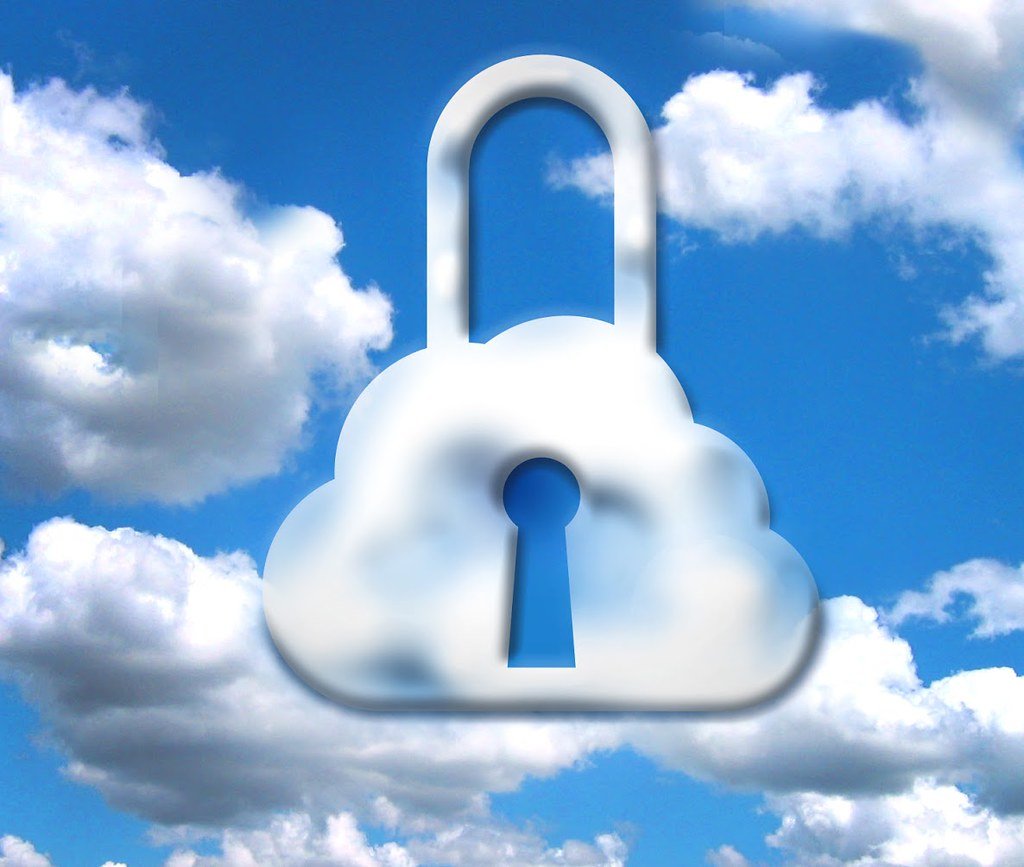Introduction to Cloud Security
A Total Guide to Securing Your Cloud Environment. Cloud security has become an important topic for businesses of all sizes. The cloud offers a number of benefits, such as economy of scale and the ability to quickly roll out new services, but it also brings new risks. In this guide, we’ll discuss the basics of cloud security and outline steps you can take to protect your data and applications in the cloud.
1. What is cloud computing?
Cloud computing is a model for enabling ubiquitous, on-demand access to remote resources. It enables organizations to access resources—such as data, applications or software tools—from anywhere in the world. Cloud computing allows you to pay for usage rather than owning or installing the resources yourself.
Cloud business models range from Software as a Service (SaaS), which provides packaged software that you use online, to Platform as a Service (PaaS), which gives you access to an entire platform so you can build applications without having to build the underlying infrastructure yourself. Many large companies have moved their entire customer service operations into the cloud in order to provide customers with an easy way to contact them from any location and using any device.
Understanding the Threat Landscape in the Cloud
Cloud computing has revolutionized the way people work and businesses operate. It offers tremendous flexibility, convenience and cost savings for organizations of all sizes. However, like any new technology, there is also a risk associated with cloud computing. In this article, we will explore the different types of threats that are often associated with cloud environments, and provide some tips to help you minimize those risks.
The first threat to consider when considering cloud computing is data loss. If your data is lost in the cloud, it’s not just inconvenient – it can be disastrous for your business. A breach in security could allow hackers access to sensitive information such as customer records or financial data. If this happens in spite of your best efforts to protect your data, you may find yourself facing legal action and possible damage to your reputation.
Another common risk when using the cloud is privacy concerns. With so much personal information now stored online, it’s important that data is securely protected when it’s being transmitted over the internet. If you’re not sure who has access to your cloud-based files or what they can do with them if they get their hands on them, then you need to take measures to protect yourself.
A final threat that comes with using the cloud is cybersecurity breaches . Since cloud computing relies on networks of remote computers, it’s vulnerable to attack from cybercriminals who want to steal confidential information or disrupt business operations by installing malware on individual machines. By taking steps to protect your data and your systems, you can minimize the risk of a cloud-based attack.
Overall, the risk landscape when it comes to using the cloud is complex and constantly changing. However, by understanding the different types of threats and taking appropriate steps to protect yourself, you can ensure that your business continues to thrive in this new era of computing.
Best Practices for Securing Your Cloud Environment
Cloud computing is quickly becoming the norm, and with good reason. It offers a number of benefits, including lower costs and easier access to resources. But like anything else, cloud computing comes with risks. To protect your data and your business, follow these best practices for securing your cloud environment:
1. Secure your data at rest. Protect your sensitive data by encrypting it using a strong encryption algorithm. Make sure you have a backup plan in place so you can restore your data if necessary.
2. Use strong passwords and security measures for user accounts. Create strong passwords that are at least 12 characters long and include different types of letters, numbers and symbols. Also, use two-factor authentication when possible to further protect your account from unauthorized access.
3. Keep an eye on suspicious activity. Be sure to monitor your system for any suspicious activity that could indicate a cyberattack is underway. Alert administrators immediately if you notice anything unusual or out of the ordinary.
4. Protect yourself from phishing attacks. Phishing scams attempt to steal personal information by masquerading as legitimate websites or emails. Be sure not to give out any personal information until you know who you’re talking to firsthand – and never reply to unsolicited emails asking for personal information!
Managing Access and Identity in the Cloud
As businesses transition to the cloud, managing access and identity becomes an increasingly important task. This guide provides step-by-step instructions on how to secure your cloud environment using the latest security technologies.
First, establish a baseline of security measures for your cloud environment by reviewing your organization’s current security posture. Next, identify the types of users who will need access to your cloud resources and create a list of explicit permissions that these users must possess. You can then create user profiles for each user on your system, specifying their role in your business and any additional requirements (such as minimum password complexity). Finally, deploy complementary security solutions such as two-factor authentication and firewalls to protect against malicious activity.
Compliance with Regulations and Standards in the Cloud
The cloud environment offers a number of benefits over traditional enterprise computing, such as increased flexibility and agility. However, this flexibility also comes with the potential for increased risk. To minimize these risks, it is important to comply with regulations and standards in the cloud.
One key standard to comply with is the General Data Protection Regulation (GDPR). This regulation sets out specific requirements for how personal data must be handled by organizations operating in the European Union (EU). Among other things, GDPR requires that organizations must have a process in place to ensure that personal data is collected fairly and lawfully, and that it is used only for the purpose for which it was collected. Personal data must also be securely stored and processed, so that it cannot be accessed or altered by unauthorized individuals.
Another compliance requirement related to the cloud is HIPAA. HIPAA governs how medical information must be protected and transmitted between businesses and healthcare providers. Under HIPAA, businesses must take steps to ensure that medical information is properly protected from unauthorized access, use, or disclosure. Additionally, businesses must ensure that all parties who need access to medical information are properly qualified and authorized to do so.
Many other regulations and standards apply to the cloud environment. For example, many organizations use cloud-based applications that require compliance with applicable Microsoft Windows operating system security settings. In addition, many organizations use encryption technologies such as SSL/TLS to protect data transmissions in the cloud. Accordingly, it is important to understand these security requirements and to comply with them.
If you are unsure whether your organization is complieing with any regulations or standards in the cloud, you should consult with an experts.
Detecting and Responding to Threats in the Cloud
Cloud computing has revolutionized the way business is being done. It allows for a more flexible, scalable, and cost-effective way of doing business. Unfortunately, this also means that there are now more avenues for attackers to exploit.
When it comes to cloud computing, you need to be on the lookout for threats in three main areas: data storage, data processing, and communication. Let’s take a look at each:
Data Storage: Malware can infect your cloud-based servers and spread throughout your system. You need to make sure you have up-to-date antivirus software installed and keep an eye on your security logs to detect any suspicious activity.
Data Processing: Your cloud-based applications rely on remote services to function properly. This means that if those services are compromised, your data could be at risk. Make sure you have proper firewall policies in place and monitor traffic flows between your systems and the remote services.
Communication: Attacks against cloud-based systems can come from any direction – including from within your own organization. Make sure you have tight security measures in place for both internal and external communications, such as firewalls and intrusion detection/prevention systems (IDS/IPS).
Disaster Recovery and Business Continuity in the Cloud
Cloud computing has revolutionized the way businesses operate. It allows companies to outsource certain tasks and workloads, while still having access to the resources they need when they need them. However, as with any new technology there are also risks associated with using cloud computing. If your business is ever impacted by a major disaster, it’s important to have a Disaster Recovery plan in place so you can continue operating during the crisis.
One of the most important aspects of disaster recovery is maintaining continuous connectivity to your critical applications and data. This means having a reliable backup and recovery solution in place so you can quickly restore your systems if something goes wrong. You’ll also want to make sure you have an operational plan for closing down your operations should emergency responders request it.
By following these steps, you’ll be able to minimize the impact of a disaster on your business operations and keep your customers happy.
The Future of Cloud Security
Cloud security is a growing concern for businesses of all sizes. The cloud offers many benefits, but it also opens up new vulnerabilities that must be taken into account when securing your data. In this article, we will discuss the major threats posed by the cloud and how to protect yourself against them.
Cloud security is a growing concern for businesses of all sizes. The cloud offers many benefits, but it also opens up new vulnerabilities that must be taken into account when securing your data. In this article, we will discuss the major threats posed by the cloud and how to protect yourself against them.
The biggest threat to your data in the cloud comes from malicious actors who want to steal your information or damage your system. To protect yourself from these attacks, you need to understand what kinds of attacks are possible and how they work.
One of the most common attacks on systems in the cloud is called “Man-in-the-Middle” (MitM) attack. This attack happens when an attacker intercepts and alters traffic between two parties – in this case, your computer and the web server you are trying to access. This can allow attackers to steal sensitive information or even take control of your computer. To avoid MitM attacks, always use a secure connection whenever you are accessing sensitive information in the clouds!
One other common attack on systems in the clouds is called “Cross-Site Scripting” (XSS). This attack occurs when an attacker injects malicious code into a web page that is displayed to users of the page. This code can then be used to steal personal information or run malicious commands on your computer. To protect yourself from XSS attacks, always use a secure web browser and make sure all scripts are properly filtered and validated.
Finally, you need to be aware of data theft in the cloud. Data theft occurs when unauthorized individuals gain access to your data and use it without your permission. To protect yourself from data theft, always keep your data confidential and use strong passwords. Also, be aware of where your data is being stored and make sure it is only accessible by authorized personnel.
These are just a few of the many attacks that can happen in the clouds. By following these simple tips, you can protect your system and data from harm.
Conclusion
In this article, we have given you a comprehensive guide to securing your cloud environment. By following our tips, you will be well on your way to ensuring that your data remains safe and secure in the cloud. We hope that our guidance has helped you understand the importance of protecting your data and that you will now take steps to ensure its security. Thanks for reading!







